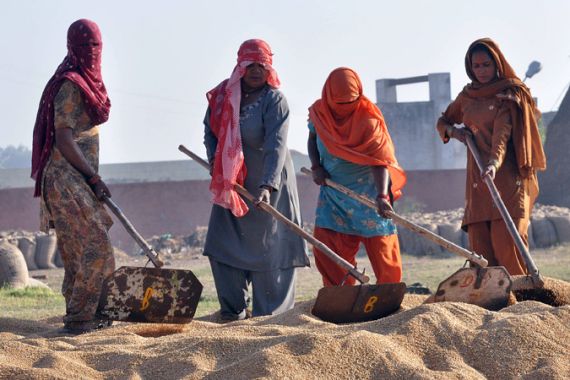
Empowering women, feeding children
Could putting land into the hands of women be the solution to the scourge of child malnutrition in India?
A new report indicates that despite India’s robust GDP growth (last year’s rate was eight to nine per cent) the country’s children remain haunted by an age-old scourge – malnutrition.
A new UNICEF report found that more than half of all Indian girls aged 15 to 19 are anemic.
This follows a host of previous – and just as devastating – studies and makes clear, in the Indian context, that a healthy economy does not necessarily mean healthy children.
This is not just a problem for India’s poor. It puts all of India at risk because when children are malnourished they are at severe risk of reduced health and mental capacity. These deficiencies cost India, in economic terms, an estimated $28bn per year.
There is growing evidence that the solution may be addressing another age-old scourge – the low status of women.
Specifically, research indicates that the path forward may be providing India’s mothers with more control over resources, both land and money, to ensure that their children’s needs are met.
Currently, although Indian women provide about one-third of the agricultural labour, they own only 11 per cent of the land, leaving them with little in the way of resources to leverage to meet their children’s needs.
Understanding this allows India to craft targeted and effective responses to this crisis.
While government programmes that provide free food and vitamins will surely help, what may help fill dinner pots and children’s bellies in the long-run is improving the status of women and expanding the resources they can draw from.
This means recognising that women often have no legal control over the land they farm with their husband and therefore cannot lay claim to any of the income produced on that land, even if it is gained through their own labour.
There is an increasing body of research that points to the way forward:
A study in Nepal found that children are less likely to be underweight if their mother owned land.
And a study in Ghana found that families allocate a larger proportion of their household budget to food when the woman owns a larger share of the household’s farmland.
We have also seen it in our work from Rwanda to India that when women have secure rights to the land, either jointly with their husband or on their own, there are improved educational outcomes, nutrition and health.
Across India, national and many state governments from Odisha to West Bengal, already recognise this and are working to put a powerful asset – land – into the hands of women.
This will allow India’s mothers to ensure a better future for their children and their country.
Sunil Kumar and Sanjay Patnak are state directors in Andra Pradesh and Odisha respectively for Landesa, a global development non-profit that works to secure land rights for the world’s poor. Follow them @Landesa_Global
The views expressed in this article are the authors’ own and do not necessarily reflect Al Jazeera’s editorial policy.